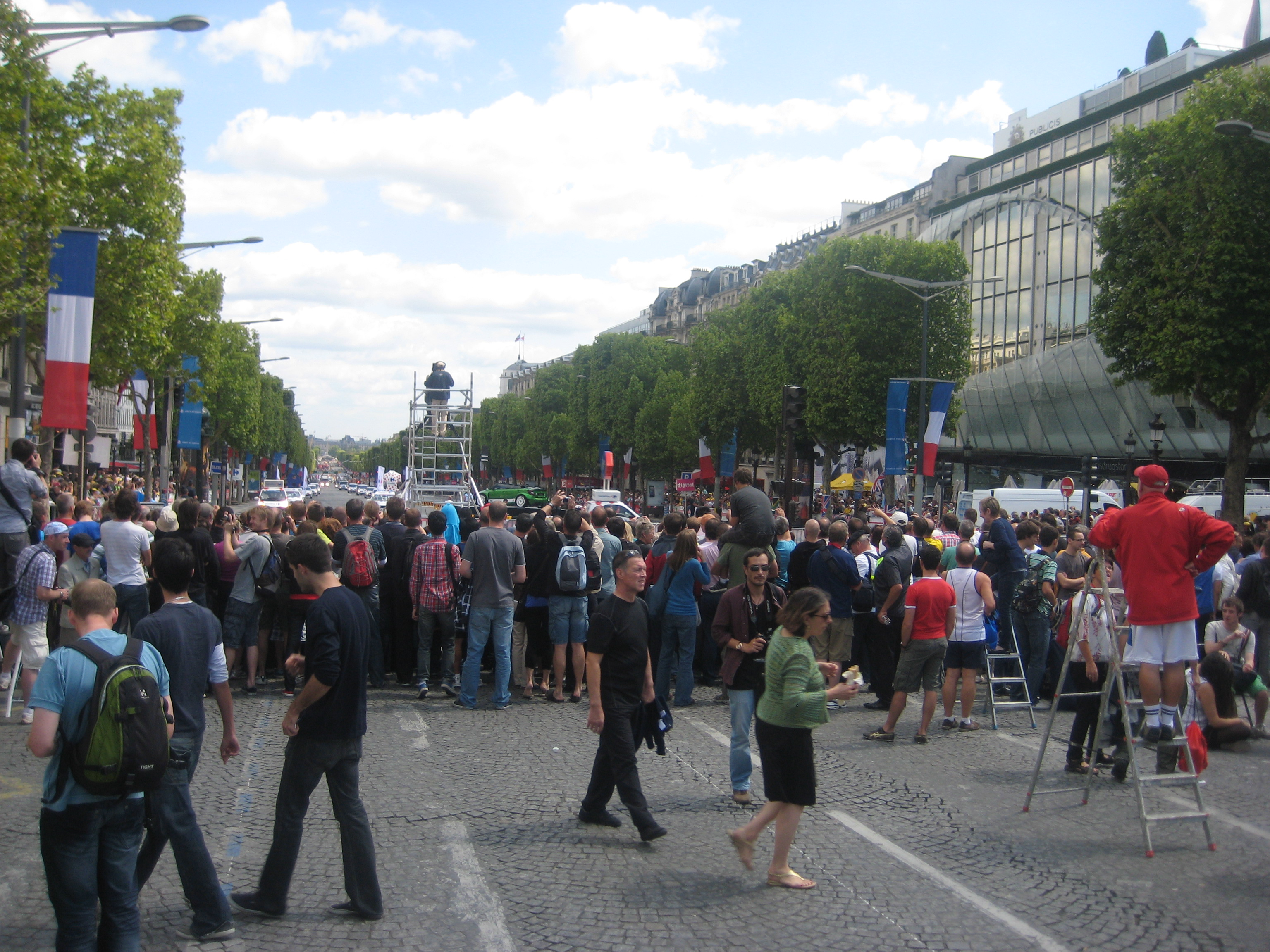 I am intrigued by the impact in real time of social media, specifically Twitter, on live events. I find it fascinating that people use Twitter to participate in events, even when they are not present, by offering information or opinion. The 140 character limitation of a tweet gives an immediacy and urgency to audience participation, even when the audience is a global and virtual one. Sometimes the information sent by observers is insider information available only to them, and this gives Twitter an advantage over other news forms that rely on the infrastructure of traditional journalism. At other times, it is simply the urgency of mobilizing people around a short term goal that makes Twitter seem so transformative. In many cases, however, Twitter is simply a tool to spread time-sensitive information, such as celebrity gossip, to large numbers of people in a short period of time. Much like the introduction of cable news and the 24 hour news cycle during the Gulf War, Twitter is revolutionizing societal expectations about the delivery of timely information.There are a myriad of ways in which Twitter is being used as a realtime tool to affect events all over the world. In a very real sense, Twitter has created new ways for people who do not know each other to come together around the electronic hearth, and in may cases, to come together in real life as well.
I am intrigued by the impact in real time of social media, specifically Twitter, on live events. I find it fascinating that people use Twitter to participate in events, even when they are not present, by offering information or opinion. The 140 character limitation of a tweet gives an immediacy and urgency to audience participation, even when the audience is a global and virtual one. Sometimes the information sent by observers is insider information available only to them, and this gives Twitter an advantage over other news forms that rely on the infrastructure of traditional journalism. At other times, it is simply the urgency of mobilizing people around a short term goal that makes Twitter seem so transformative. In many cases, however, Twitter is simply a tool to spread time-sensitive information, such as celebrity gossip, to large numbers of people in a short period of time. Much like the introduction of cable news and the 24 hour news cycle during the Gulf War, Twitter is revolutionizing societal expectations about the delivery of timely information.There are a myriad of ways in which Twitter is being used as a realtime tool to affect events all over the world. In a very real sense, Twitter has created new ways for people who do not know each other to come together around the electronic hearth, and in may cases, to come together in real life as well.
- Twitter has shortened or erased the lag in news reporting, at least in some sense. In the case of Whitney Houston’s death, Twitter reportedly beat traditional news outlets such as AP by 27 minutes, although this is debatable.
- According to recent research, Twitter can predict the stock market as well as elections.
- Twitter is being used in real time to report and prevent crime.
- Twitter is being used by Justin Timberlake to create flashmobs to provide crowds of extras for music video filming.
- Research by the University of Washington suggests that Twitter played a critical role in the Arab Spring uprisings.
What is most interesting to me, however, is the way in which Twitter can be used to not only spread news but also engage a global audience in taking action in realtime to affect change.
Let’s look at 8 of the 15 top traffic-generating events on Twitter to date to get a sense of what types of events drive large amounts of realtime audience interest and participation in the Twittersphere:
1. Japanese anime game Castle in the Sky: 25,088 TPS (tweets per second)
2. End of Superbowl XLVI: 10,245 TPS
3. Madonna’s Halftime Show at same: 10,245 TPS
4. Tim Tebow’s Overtime Touchdown Pass: 9420 TPS
5. MTV Video Awards/Beyonce: 8869 TPS
6. Execution of Troy Davis: 7671 TPS
7. FIFA Women’s World Cups: 7186 TPS
8. Steve Jobs resigns: 7064 TPS
We can see that three out of eight of these top traffic drivers were sports events. The obsession with sports on Twitter is further supported by looking at the top trending tags on Twitter using the tool www.trendsmap.com. Sports discussions, in particular discussions about a sports persona (is he being traded, etc.) generally dominate the trends in most cities at any given time during the day, except when major local news stories happen (for example, Whitney Houston’s death dominated LA Twitter traffic for many hours).
After sports, the second most dominant subject is entertainment news. The Madonna Halftime Show and the MTV Awards (Beyonce’s pregnancy announcement) are examples of these events. In both sports and entertainment, Twitter audience participation is essentially voyeuristic, and consists primarily of gossip and news reporting. In this respect, Twitter truly has become the electronic “campfire and water cooler” of the 21st century.
The Japanese anime film Castle in the Sky Twitter event in December 2011 is an interesting example of realtime Twitter audience participation that is relatively unknown in the US. What drove the incredibly high participation numbers was direct engagement by the television network, which urged viewers during the broadcast to tweet the word “balse” to help the main characters cast a spell during critical moments in the film. This is an example of the organized and purposeful solicitation of realtime audience participation, where a large group of physically separated audience members are drawn together to use social media to achieve a common goal with a deadline. Although in this case the effects were not related to real life, they show the power of social media to elicit a response in large numbers of individuals when challenged to achieve a realtime, immediate event-related goal through participation in Twitter.
Number 6 on the list, the execution of Troy Davis, is an example again of an attempt (although sadly, futile) to solicit the help of the Twitter audience to affect events in real time. Supporters of Troy Davis organized a social media campaign via Twitter and Facebook using the hashtag #TooMuchDoubt to try and stop his execution. In a country where the penal system is unlikely to be swayed by public opinion, much less aware of social media feedback, it is not surprising this campaign was unsuccessful. As various other recent Twitter scandals seem to suggest, however, it may only be a matter of time before even the more slowly moving branches of government such as Justice may not feel indifferent to a storm of organized social media protest.



1 comment